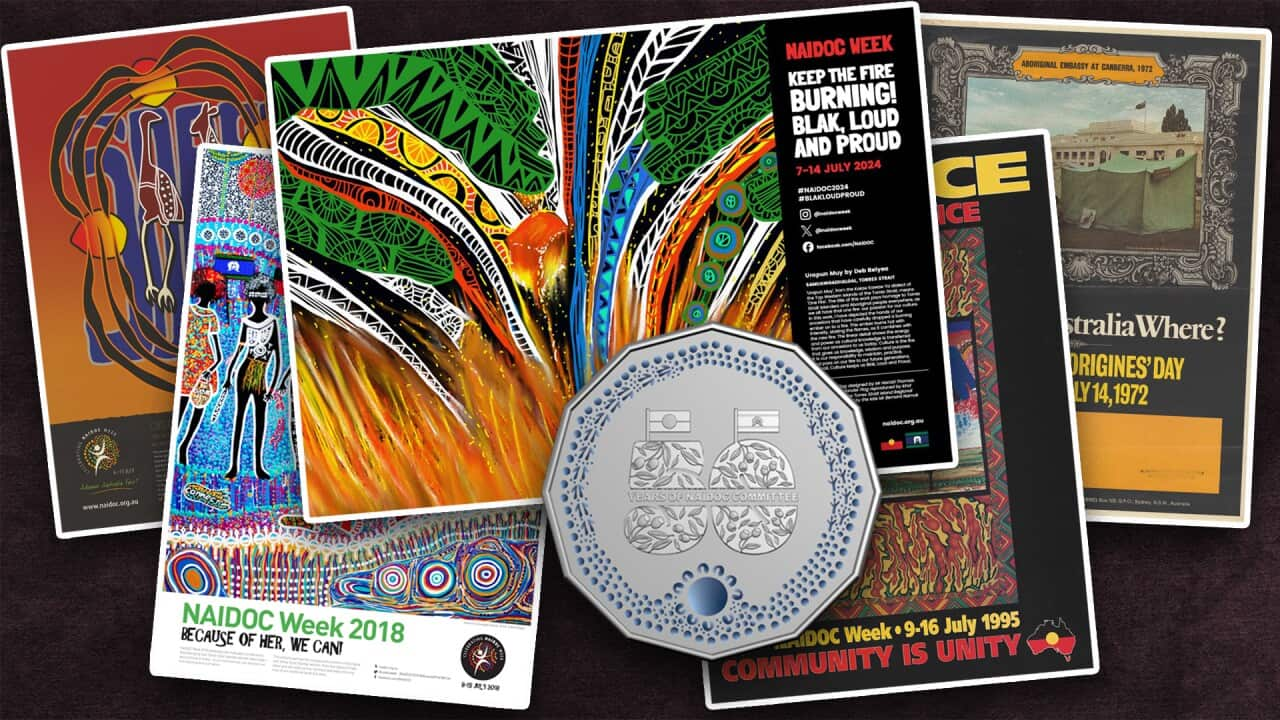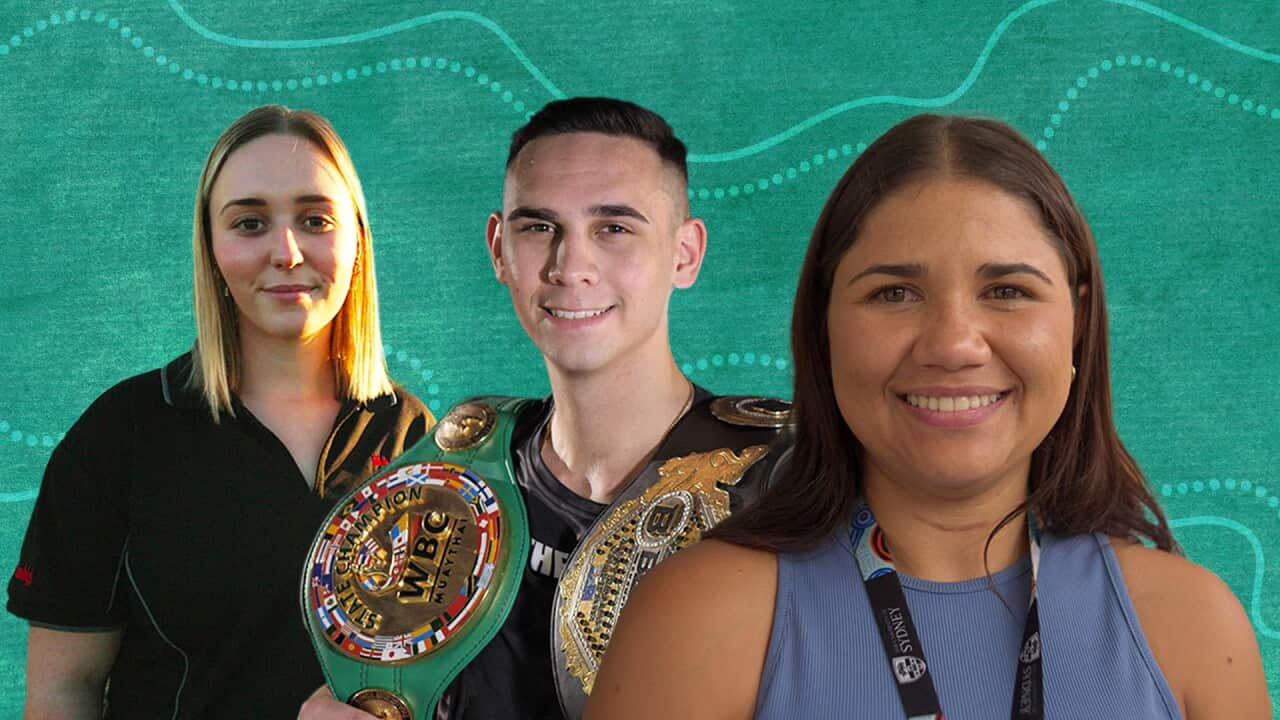This year the NAIDOC Committee will reach the milestone of 50 years.
Over the past five decades, the committee has been integral to choosing a theme and steering the celebration of NAIDOC Week in communities around the country.
What evolved into a celebration of culture, excellence and our people, all started with a protest.
A brief recap of NAIDOC Week
The Day of Mourning protest in 1938 is widely regarded as the catalyst for creating an annual event that centres First Nations peoples and culture.
In the 40s and early 50s, the Day of Mourning was held on the Sunday before Australia Day and was known as, 'Aborigines Day' - a term deeply rooted in colonial language and seen as inappropriate today.
In 1955 the day was shifted to the first Sunday in July and was promoted as a day of celebration.
The following year, the second Sunday in July became a day of remembrance, which provided the key dates of which NAIDOC Week (then NADOC) would be celebrated and still is today.
In 1974 the National Aborigines Day Observance Committee (NADOC) was, for the first time, formed entirely of Aboriginal members. The year also marked the first time the event would be celebrated for the full week.
The 90s saw NADOC expand to recognise Torres Strait Islander peoples and culture.
NAIDOC today and the influence of the past
Today, the NAIDOC Committee continues to make all decisions on NAIDOC activities, including the focus city, the theme, the National NAIDOC Poster competition winner and the National NAIDOC Awards winners.
Cherisse Buzzacott is a new addition to the committee joining in January this year.
The Arrernte woman and midwife said NAIDOC has always been a special time in the calendar for her and jumped at the chance to be on the national committee.

Cherisse Buzzacott joined the NAIDOC committee this year after years of involvement in local celebrations. Credit: NAIDOC
"So I thought it could be a way of giving back to the community as a way that I can represent my mob and the working that I’m doing, so I jumped at the chance to be involved."
Reflecting on the legacy and influence of the NAIDOC committee, Ms Buzzacott said the themes stand out as a highlight.
"Over the years we’ve seen some really powerful themes," said Ms Buzzacott.
"Some of the themes from recent years, but also looking back on some old posters from back in the day.
"I think having that general focus on a certain theme has really helped to push different platforms for different people in different areas."
Themes over the years have included: 'Our Children, Our Future', 'Respect the Past, Believe in the Future' and the first in 1972 with 'Advance Australia Where?'.

1972's NAIDOC Theme 'Advance Australia Where?' poster Credit: naidoc.org.au
She said the committee looks at ideas that have been floated from past years and considers the impact they want to have.
Ms Buzzacott said when the committee heard the final wording of 'Keep the fire burning! Blak, loud and proud' they were sold.
"We thought, 'that is powerful'," she said.
"'That is going to make a real big impact'."
Ms Buzzacott explained in the process of developing 2024's theme, the committee wanted to focus on the referendum but also the next generation.
"[The referendum] was a big movement for us," said Ms Buzzacott.
"It consumed our lives for the last, one to two years, so we really wanted to bring out something that was a strong stand alongside the referendum... and so how can we demonstrate that actually we don’t need a ‘voice’, we don’t need government, [and] we don’t need the constitution telling us that we can have a voice, that we can be who we are."
Ms Buzzacott said the traditions and past of NAIDOC still have a strong influence today, but that the committee wants to reflect the changing times.
"Each little bit of NAIDOC has demonstrated something for me where it’s made an impact, there’s not anything that I’ve been a part of where I’ve gone, ‘oh that’s really outdated we don’t want to do that’," said Ms Buzzacott.
"We’re keeping the traditions going for everything that we’re doing, but we’re also trying to modernise and move with the times as well.
"We’re talking about having influencers and having TikTok people at the awards, because that’s the movement, that’s the change… we want to respond to the changing times. We want to move with the times, but also we’re keeping a lot of those traditions in the way we work."
Honouring a 50 year legacy
In honour of the committee's 50 years, a special coin has been created in commemoration.

The Royal Australian Mint has honoured 50 years of the NAIDOC committee with a coined designed by Dagoman, Wardaman, Gurindji artist Cortney Glass. Credit: NAIDOC
"I am incredibly grateful for the opportunity to collaborate with the National Indigenous Australians Agency, the NAIDOC committee and the Royal Australian Mint on this significant milestone and project.
“As a girl originally from the small country town of Katherine, Northern Territory being the artist behind a special collectible coin is beyond my wildest dreams. This experience is truly an honour, and I am profoundly thankful for it," Ms Glass said.
Co-chair of the National NAIDOC Committee Aunty (Dr) Lynette Riley, said the committee had worked tirelessly to bring the coin to life and it was a special keepsake of this significant milestone.
“Fifty years of NAIDOC being co-ordinated by an all Aboriginal and Torres Strait Islander Committee is significant in the recognition and empowerment of Indigenous people to control the messages, through the themes we want Australia to focus on and learn about through our directions.
“The coin image selected by Cortney epitomises what NAIDOC is about, through the listing of all the themes from 1972, surrounded by artwork which emphasises culture as our foundation for who we are; and the ongoing struggles in fighting for Indigenous rights and that this is done in solidarity.
“In producing this coin, we wish to celebrate and pay homage to all our people who have worked tirelessly over the past 50 years to ensure NAIDOC is a celebration of our people and our cultures, locally, state-wide, and nationally. Our Elders, who first established NAIDOC, would be very proud of them all,” Dr Riley said.













